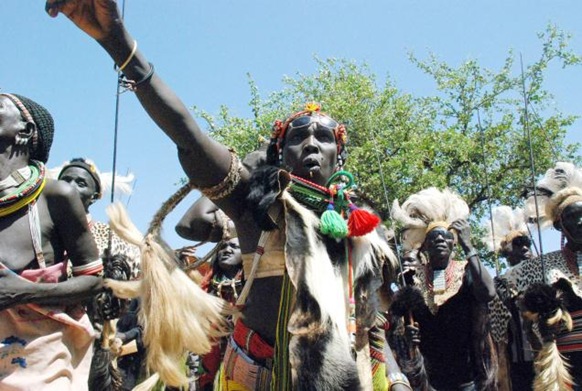Africa’s many tribes and cultures has given it a long and interesting history. But when the European colonial powers drew up boundaries they did not take this into consideration. Sudan is the most recent example of this.
Sharing space with people of the same culture is natural. However, history is complicated. Sometimes it can put groups who do not share enough similarities into a single country. This can lead to difficulties in the long run. If there is enough mutual dislike, it can lead to one group wanting to break away and form a separate country.
A few geographical concepts help us understand this. Cultural differences, some of the people feeling that they have suffered injustice, some desire a separate political area, and so on. These are a few of the forces that dis-unite a country. They are called ‘centrifugal forces’ —borrowing the concept from Physics. Different units want to go away from the centre.

AFP CELEBRATION Southern Sudanese from the Toposa ethnic group celebrate the choice of separation from the north. Photo AFP
Sometimes, these centrifugal forces are suppressed. Saddam Hussein (Iraq) and Marshal Tito (former Yugoslavia) suppressed centrifugal forces in their countries. The former USSR consisted of many republics whose populations were very different from each other. They were held together by the communist party dictatorship.
Eventually, individual populations want to break away or ‘secede’. The process is called ‘secession’.
In Sri Lanka, the Liberation Tigers of Tamil Eelam (LTTE) fought unsuccessfully for decades to secede. In Kashmir, there are populations who want to secede from India and either merge with Pakistan or become an independent country altogether.
The latest example is Sudan, Africa. The people of the southern part of Sudan recently voted overwhelmingly to secede.
The history of country boundaries in Africa is long and complicated. Traditional ethnic boundaries of Africa had evolved over centuries. European colonial powers drew up new boundaries without any consideration for the old ethnic boundaries. Some traditional tribal areas got cut up into different countries as new international boundaries were drawn. In many cases, very different tribes suddenly found they were part of a new country. They ended up being competitors for resources. Suddenly they were in a new country, competing for limited resources. Their cultural differences became the basis for expressing their dissatisfaction with the situation. Centrifugal forces came into play.
Demands for secession increased. Sudan is the latest example.
Sudan’s northern part is predominantly Arab Muslim. The southern part is a mixture of some 200 different ethnic and religious groups with no one dominant group.
The northern part is a desert except along the Nile. The southern part has grasslands, savannahs, and tropical forest — depending on rainfall patterns. More complicated is the distribution of the underground oil reserves — the new border will cut across them, making them international. Will this be a source of future conflict?
(For updates you can share with your friends, follow TNN on Facebook and Twitter )
